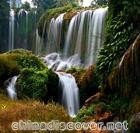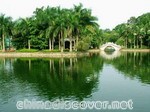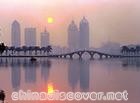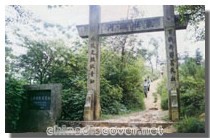About Nanning
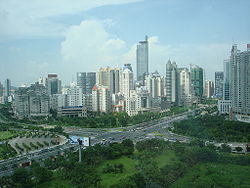
-
City Name:Nanning (Chinese: 南宁, Pinyin: Nánníng)
-
Population :Municipality 22,293 square kilometers
-
Location :Situated at 22°12′23″N 107°45′108″E
-
Overview:Nanning is located in the southern part of Guangxi Zhuang Autonomous Region, 160 km from the border with Vietnam.
In 1958, Nanning became the capital of Guangxi Zhuang Autonomous Region. Nanning is located in the southern part of Guangxi Zhuang Autonomous Region, 160 km from the border with Vietnam. It is known as the "Green City" because of its abundance of lush tropical foliage.
Geography
Nanning City is located between 107o45'-108o51'eastern longitude and 22o12'-23o32'northern latitude. The downtown area lies in the Nanning Basin, one of the four largest in Guangxi Zhuang Autonomous region, with an average elevation of 80 to 100 meters. The highest point is 496 meters above sea level. The major river within Nanning is the Yujiang River, the largest tributary of the Xijiang River, and the section of it running through the city is known as the Yongjiang River and joins the Pearl River System.
History of Nanning
A county seat called Jinxing was first established at the site in AD 318. This became the administrative seat of a commandery. Nanning was once the territory of the Baiyue people and became the capital of Jinxing Prefecture separated from Yulin Prefecture of the Eastern Jin Dynasty.
In 589 the commandery was suppressed, and the county was renamed Xuanhua. Under the Tang dynasty (618–907) the prefecture of Yong (Yongzhou) was established there; it was garrisoned to control the non-Chinese districts in Guangxi and on the Yunnan–Guizhou provincial border.
In the mid-9th century the Tang and the Yunnan state of Nanzhao fought over it, and after 861 it was briefly occupied by Nanzhao. It remained a frontier prefecture throughout the Song dynasty (960–1279), being the scene of a rebellion led by Nong Zhigao in 1052 and thereafter a garrison town.
In the Yuan Dynasty in 1324, it was renamed Nanning Lu (an administrative division) of Yongzhou Lu meaning "May peace maintain in the southern frontier", hence the name Nanning. Historically, Nanning was famous for trade, and had permanent business offices from other areas in China since the Song Dynasty.
Under the Ming (1368–1644) and Qing (1644–1911) dynasties, it was a superior prefecture. In the Ming Dynasty Nanning developed into the commodity distributing center of the Zuojiang River and the Youjiang River with the reputation of "Little Nanjing".
In modern times, the famous generals Liu Yongfu and Feng Zicai bravely safeguarded the region against French aggressors in a bid to defend their homeland.
Moreover, the city has also witnessed glorious deeds by locals as following: the 1911 Revolution, the May 4th Movement in 1919, dispatching troops to aid the Northern Expeditionary Armies, the founding of the Seventh and Eighth Armies of the Chinese Workers' and Peasants' Red Army, the Baise Uprising paving the way for establishing the Zuojiang and Youjiang revolutionary bases, the Longzhou Uprising and the bloody Kunlunguan Campaign which gave a heavy blow to the Japanese aggressors.
The local people have added an illustrious chapter to the history of defending the homeland and pursuing social progress by safeguarding the South Gate of the motherland and participating in the socialist construction of New China.
Tourism
Nanning is close to scenic Guilin, with its world famous hillscape, northern and western Guangxi and its minority villages, and the border with Vietnam in the south. The famous Detian Waterfall is 3 hours drive from Nanning.
